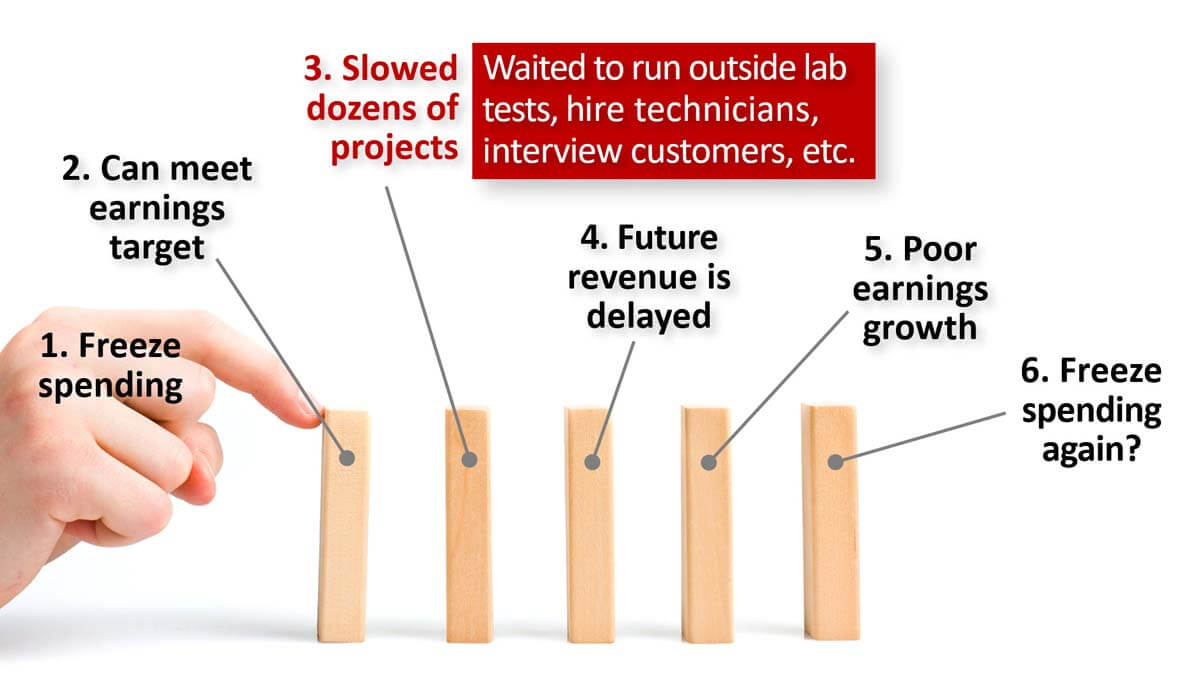When you change a system, you always have a second-order effect. You can’t tip just one domino. Freeze discretionary spending this quarter and you’ll slow dozens of projects, as teams wait to run outside lab tests, hire technicians, interview customers, etc. Product launches are pushed back, delaying future growth. Otherwise-bright business leaders suffer from first-domino fixation over and over.
And most don’t learn from it. How often have you heard, “Well, our growth problem is all those crazy spending freezes the last few years”? Never? Yeah, that’s what I thought. I call this first-domino amnesia.
More in 2-minute video, Avoid the pitfalls of 2nd order effects
Do you want to think only about your next move, or think five moves ahead? Here’s a 5th order plan to maximize shareholder wealth: 1st Order: Develop superior customer insight capabilities. 2nd Order: Understand market needs better than competitors. 3rd Order: Develop high-value products focused only on these needs. 4th Order: Sustain superior growth from these products. 5th Order: Impress shareholders with your proven growth track.
More in article, Stop Stifling B2B Organic Growth with 2nd Order Effects
A good business leader understands that every decision will have second-order effects after the initial “intended consequence.” Slower future growth is the second-order effect that often follows these decisions: 1) severe spending cuts, 2) rapid re-organizations, 3) hiring freezes, 4) travel bans, 5) R&D staffing cuts, 6) marketing staffing cuts, 7) new initiatives that distract, and 8) excessive M&A activities. Some such decisions may be needed… but consider the second-order impact on your growth.
More in article, Stop Stifling B2B Organic Growth with 2nd Order Effects
How often have you heard this at a financial review meeting, “Well, one reason our revenue is lagging today is that crazy spending freeze we put in place last year”? If you’ve never heard this, it’s because leadership was fixated on last year’s first-order action (making the quarterly numbers), not the second-order effect (slower growth later). And they probably remain so today. If so, what does this tell us about a) our ability to learn from our mistakes, and b) our future growth prospects?
More in article, Stop Stifling B2B Organic Growth with 2nd Order Effects
Tipping the first domino is a first-order action, the second tipped domino is the second-order effect, and so on. Strangely, if the first order action feels satisfying all by itself, you’re probably headed for trouble with subsequent effects. So it might feel good to slash spending to hit this quarter’s numbers… but your future growth will be stymied. In fact, your slow growth today is probably the culmination of many first-order actions you’ve long since forgotten.
More in article, Stop Stifling B2B Organic Growth with 2nd Order Effects





